Hedging
From Evergreen to Deciduous
Order Online from Mid-August for Delivery from Autumn until Mid-March
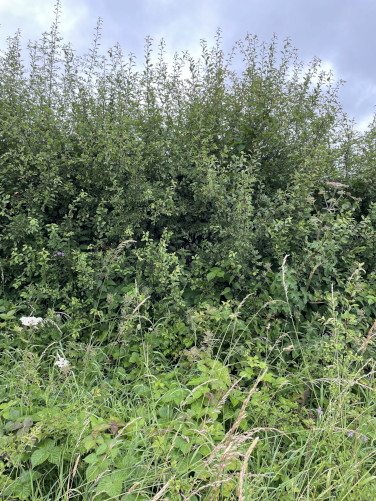
Blackthorn
Field Rose (Rosa arvensis) Deciduous
The seed supplier have a very specific description of a Field Rose. It is said that it makes a good boundary hedge and is very spiky, but has beautiful yellow and white flowers producing red hips in the autumn. Personally I have never noticed a Rose only hedge. All our ancient field hedges have Wild Roses dotted here, there and everywhere presumably spread by animals naturally. My advice would be to only plant Rose for diversity reasons dot them along here and there. Poor soil or rocky soil should be fine.
Blackthorn (Prunus Spinosa) Deciduous
Blackthorn makes an excellent inaccessible hedge, impossible to penetrate without pruning sheers. The plant will grow over 8 meters high if left to its own devises, trimming every three years will make the best stock proof hedge. The branches are extremely spiky. Over the last five years we have not used our farm hedge trimmer so often and we have noticed how beautiful the blossom is in early spring. The fruit berries or 'sloes' are black and when ripe can be added to Gin to produce a popular drink known as ' Sloe Gin'. Blackthorn will grow in any reasonable soil type.
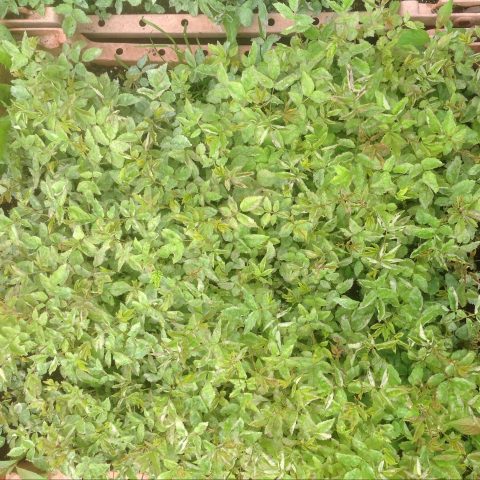
Field Rose
Hawthorn (Crataegus monogyna) Deciduous
This species is probably the most commonly used species for hedging. After a few years of good growth and expertly layered, it becomes completely stock proof to sheep and small animals without the need for fencing. If managed to grow into a tall hedge it creates the best natural shelter for animals. If left to grow naturally as a single tree it will grow around 5 meters high and produce a wonderful blossom in the spring, usually white but if you are lucky sometimes red. Grows in any reasonable soil.
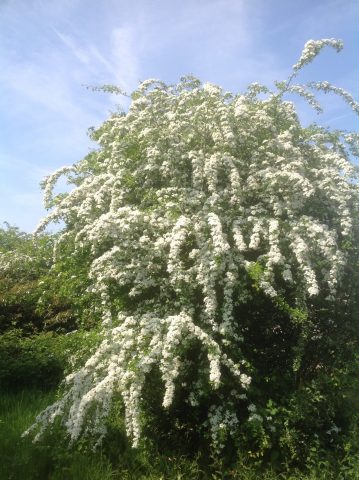
Hawthorn
Beech (Fagus slyvatica) Deciduous
This tree can be planted at a close spacing usually in a double row to form a perfect hedge. As a hedge it acts as a great screen and a wonderful wind break. In the summer the green leaves are a very attractive background to any garden. After turning brown in the Autumn the leaves normally stay on until the spring, keeping the benefits of screening and a wind break.
As a tree standing alone or as a plantation it is magnificent. I have seen trees in a plantation reach 35 meters high. The leaf mould built up under mature trees is a treat for any gardener. I am told that Beech communicate with each other!
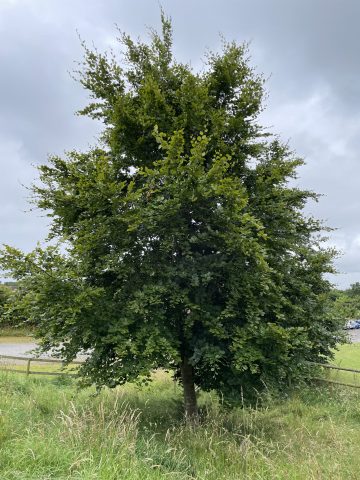
Beech
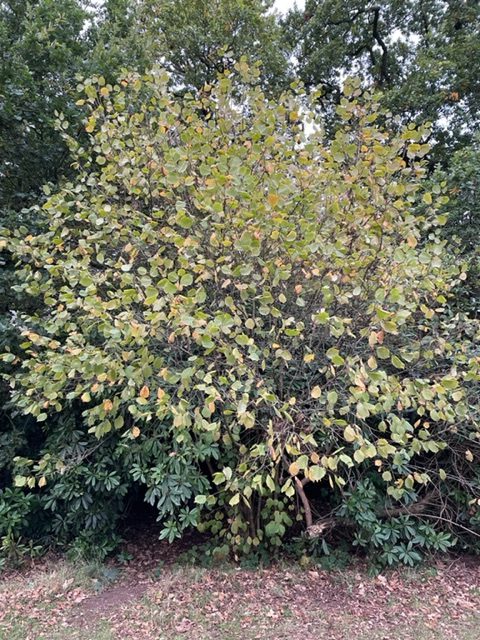
Hazel
Elder (Sambucus nigra) Deciduous
Elder grows anywhere. From good soil to the very poorest, in rocky areas even in tumble down buildings.
The flat heads of white blossom in the spring are very noticeable . These white flowers develop into deep black tiny berries. The berries can be made into a drink called Elderberry wine. The tree can be seen in most hedge rows in the country side, it spreads quite easily. However in my opinion it does not make a good stock proof hedge on it’s own but does enhance the environment, providing food for many insects and birds in medium sized gardens and hedge rows.
Hazel (Corylus avellana) Deciduous
This tree is an amazingly useful bush/tree, every medium garden should have one if possible. It is ideal for coppicing, for use in the vegetable garden or staking flowers. For ever the coppiced growths were used by farmers to make hurdles to help control sheep. The bush produces attractive catkins and very attractive large leaves in the summer.
It will grow well in most soil types. It could grow to around 12 meters tall but likes to be cut back (coppiced).
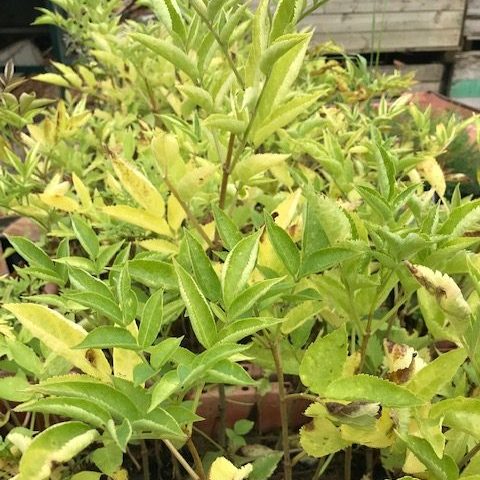
Elder
Blackthorn (Prunus Spinosa) Deciduous

Blackthorn
Blackthorn makes an excellent inaccessible hedge, impossible to penetrate without pruning sheers. The plant will grow over 8 meters high if left to its own devises, trimming every three years will make the best stock proof hedge. The branches are extremely spiky. Over the last five years we have not used our farm hedge trimmer so often and we have noticed how beautiful the blossom is in early spring. The fruit berries or 'sloes' are black and when ripe can be added to Gin to produce a popular drink known as ' Sloe Gin'. Blackthorn will grow in any reasonable soil type.
Field Rose (Rosa arvensis) Deciduous

Field Rose
The seed supplier have a very specific description of a Field Rose. It is said that it makes a good boundary hedge and is very spiky, but has beautiful yellow and white flowers producing red hips in the autumn. Personally I have never noticed a Rose only hedge. All our ancient field hedges have Wild Roses dotted here, there and everywhere presumably spread by animals naturally. My advice would be to only plant Rose for diversity reasons dot them along here and there. Poor soil or rocky soil should be fine.
Wild Cherry (Prunus avium) Deciduous
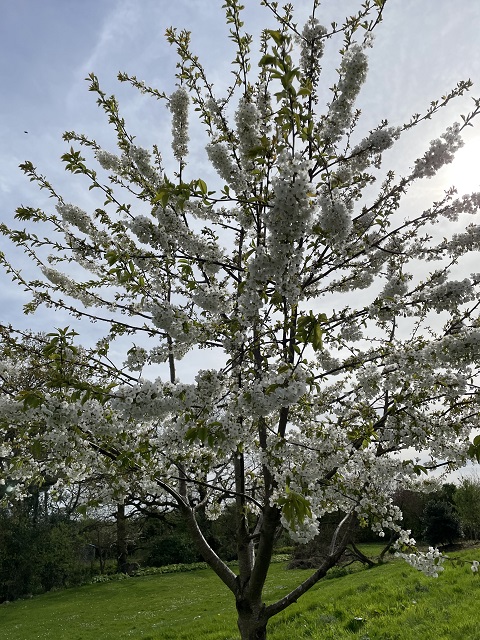
Wild Cherry
Beautiful Cherry blossom is seen everywhere in the spring time especially in urban areas and most gardens. However in the arable areas of the midlands very few are seen in hedge rows. They must be there, but due to annual hedge trimming they do not have chance to flourish. This is gradually changing due to a new incentive to encourage hedges to be trimmed less. I understand that their leaves are very tasty to caterpillars and moths which must be a big incentive to plant some. They make great trees for gardens, and can be planted in existing garden and field hedgerows.
Hawthorn (Crataegus monogyna) Deciduous

Hawthorn
This species is probably the most commonly used species for hedging. After a few years of good growth and expertly layered, it becomes completely stock proof to sheep and small animals without the need for fencing. If managed to grow into a tall hedge it creates the best natural shelter for animals. If left to grow naturally as a single tree it will grow around 5 meters high and produce a wonderful blossom in the spring, usually white but if you are lucky sometimes red. Grows in any reasonable soil.
Wild Plum (Prunus americana) Deciduous
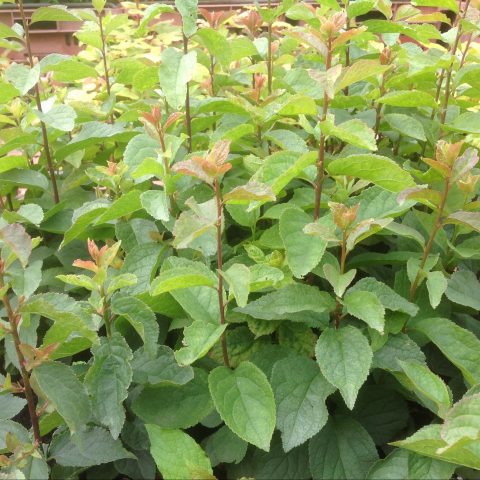
This tree is fairly common, but for me difficult to identify outside a garden centre. I believe we have several growing in our ancient hedge rows. The tree when mature is about 8 meters high it grows well on its own but I think it suits a hedge row. Blossom is similar to Blackthorn but occurring earlier in the year. It should do well in most soils.
Beech (Fagus slyvatica) Deciduous

Beech
This tree can be planted at a close spacing usually in a double row to form a perfect hedge. As a hedge it acts as a great screen and a wonderful wind break. In the summer the green leaves are a very attractive background to any garden. After turning brown in the Autumn the leaves normally stay on until the spring, keeping the benefits of screening and a wind break.
As a tree standing alone or as a plantation it is magnificent. I have seen trees in a plantation reach 35 meters high. The leaf mould built up under mature trees is a treat for any gardener. I am told that Beech communicate with each other!
Hazel (Corylus avellana) Deciduous

Hazel
This tree is an amazingly useful bush/tree, every medium garden should have one if possible. It is ideal for coppicing, for use in the vegetable garden or staking flowers. For ever the coppiced growths were used by farmers to make hurdles to help control sheep. The bush produces attractive catkins and very attractive large leaves in the summer.
It will grow well in most soil types. It could grow to around 12 meters tall but likes to be cut back (coppiced).
Elder (Sambucus nigra) Deciduous

Elder
Elder grows anywhere. From good soil to the very poorest, in rocky areas even in tumble down buildings.
The flat heads of white blossom in the spring are very noticeable . These white flowers develop into deep black tiny berries. The berries can be made into a drink called Elderberry wine. The tree can be seen in most hedge rows in the country side, it spreads quite easily. However in my opinion it does not make a good stock proof hedge on it’s own but does enhance the environment, providing food for many insects and birds in medium sized gardens and hedge rows.
Wild Cherry (Prunus avium) Deciduous
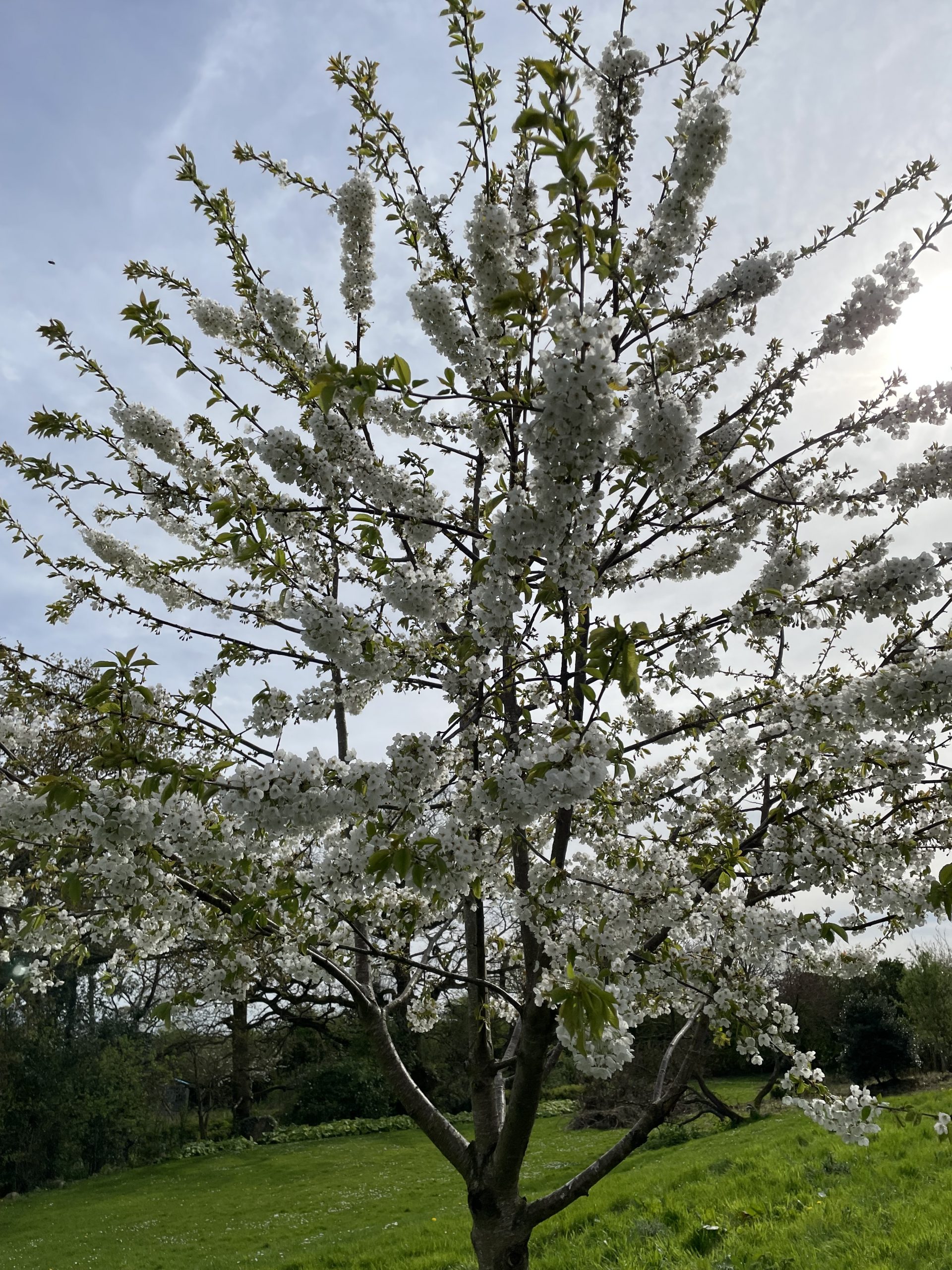
Wild Cherry
| Height | 2m to 2.5m | 3m to 3.25m |
| Circumference | 6cm to 8cm | 8cm to 10cm |
What We Do
Hedging
View our different types of Hedging Plants
Woodland Trees
View our different types of Woodland Plants
Contract Growing
Service price on application